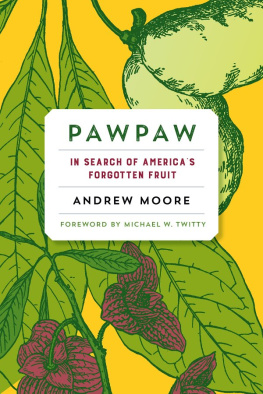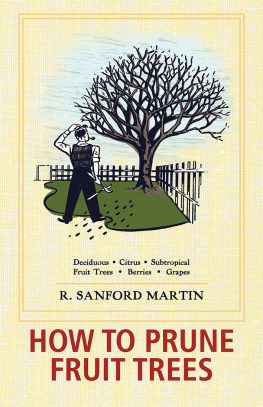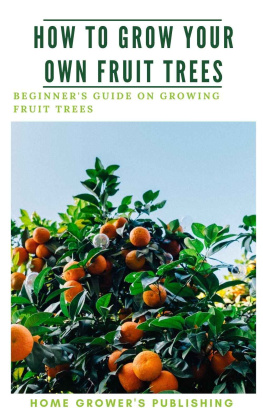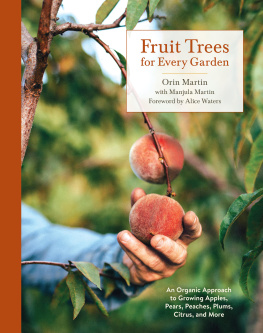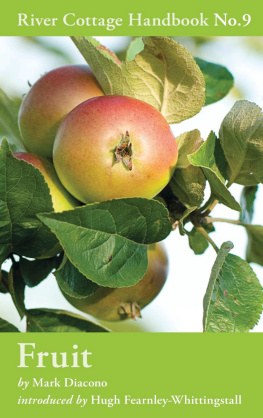Praise for Pawpaw: In Search of America s Forgotten Fruit
With Pawpaw , Andrew Moore walks firmly in the steps of the great literary journalists John McPhee and Mark Kurlansky. Stories deftly told, research deeply done, this book is an engaging ride through the haunts of a fruit many Easterners quietlysecretly, evengorge themselves on each autumn. A ripe pawpaw is as illicit as Persephones pomegranate, and Moore captures that passion well.
HANK SHAW , 2013 James Beard Award winner, Best Food Blog, and author of Hunt, Gather , Cook: Finding the Forgotten Feast and Duck , Duck, Goose: Recip es and Techniques fo r Cooking Ducks and Geese
This book is a love song singing the praises of a unique, delicious, and once-abundant fruit that has been sadly neglected. Andrew Moore takes us on a very personal journey investigating how and why North Americas largest indigenous fruit largely disappeared and documenting efforts to revive it. Pawpaw is a pleasure to read, and if you do, youll probably find yourself searching for and loving these delectable fruits.
SANDOR ELLIX KATZ , author of The Art of Fermentation
Pawpaw: In Search of Americas Forgotten Fruit is a fun and well-researched, informative romp through the culture and horticulture of this uncommon fruit. Uncommon, yes, but who would have imagined that there were and are quite a few other pawpaw nuts out there? If you dont know pawpaws, you should, and you will.
LEE REICH , PhD, author of Uncommon Fruits for Every Garden
Like a gumshoe detective, Andrew Moore tracks down a mystery at once horticultural and culinary: Why is the pawpaw, Americas largest indigenous fruit, so little known? The answer, like the fruits beguiling taste, proves multi-layered and slippery, and after reading Moores engaging account, Im ready to light out for pawpaw country myself in search of this homegrown original.
LANGDON COOK , author of The Mushroom Hunters: On the Trail of an Underground Am erica
Tropical growers have many shade crops to choose from, like cacao and coffee. Here in eastern North America we have our own luscious fruit for shady placesthe pawpaw. Andrew Moores Pawpaw tells the story of this fruit and the people working to bring it to our gardens, markets, and restaurants. Its the story of an eastern native fruit on its way to domestication, finally earning the place in our hearts and our cuisine that it deserves.
ERIC TOENSMEIER , author of Paradi se Lot and Perennial Veg etables
This book took me on an enchanting and engaging ride through the history, folklore, and science of a neglected but magical food plant. Andrew Moore shows us, in delightful prose and a wealth of fascinating stories, the role that the under-appreciated pawpaw has played in North American culture. I was constantly surprised to learn of the quiet influence the pawpaw has had on the people and environment around it, and like the author, am hopeful that it can find its rightful place among the better-known fruits that we all love.
TOBY HEMENWAY , author of Gaias Gard en and The Permaculture City
America, get ready for pawpaw mania! Andrew Moores book tells the definitive story of the wild fruit that is part of our nations heritage, and in the process the author joins the ranks of food-preservationist heroes. Prepare to be overwhelmed with longing for the sweet scent and taste of the pawpaw.
POPPY TOOKER , host of Louisiana Eats !
Andrew Moore has done an amazing job demystifying one of Americas most misunderstood and neglected fruits. Pawpaw deftly navigates between his own personal journey and the facts and history of the fruit, leaving readersincluding chefs interested in heritage and traditionwith a true sense of how important it is to embrace this indigenous treasure.
TRAVIS MILTON , chef and co-owner of Shovel and Pick, Richmond, Virginia
Here is proof that culinary odysseys dont always need to involve globetrotting or the pursuit of rare, exotic foodstuffs. But, then again, in his pursuit of the lowly American pawpaw, Andrew Moore reminds us that America was once considered an exotic destiny on its own, and has always had more than its fair share of culinary rarities.
DAMON LEE FOWLER , author of Essentials of Southern Cooking and Beans, Greens & Sweet Georgia Peaches
I was fortunate to have experienced early in life, from my Monacan Indian and Black community friends, the joy of the pawpaw, as well as maypops, chinquapins, mushrooms, and huckleberries. Andys book is one of the road maps to the resurrection of another rooted American food commodity. Pawpaw will generate enthusiasm for this unsung fruit and hopefully engender passion in a few.
TOM BURFORD , author of Apples of North America: Exceptional Varieties for Growers, Gardeners, and Cooks
Copyright 2015 by Andrew Moore. All rights reserved.
Unless otherwise noted, all photographs copyright 2015 by Andrew Moore.
Front cover image: Branch of Common Pawpaw from Charles Sprague Sargent, Manual of the Trees of North America (Boston, MA: Houghton Mifflin Company, 1905), courtesy of the private collection of Roy Winkelman
No part of this book may be transmitted or reproduced in any form by any means without permission in writing from the publisher.
Project Manager: Bill Bokermann
Developmental Editor: Michael Metivier
Copy Editor: Laura Jorstad
Proofreader: Helen Walden
Indexer: Peggy Holloway
Designer: Melissa Jacobson
Printed in the United States of America.
First printing July, 2015
10 9 8 7 6 5 4 3 2 115 16 17 18 19
Our Commitment to Green Publishing
Chelsea Green sees publishing as a tool for cultural change and ecological stewardship. We strive to align our book manufacturing practices with our editorial mission and to reduce the impact of our business enterprise on the environment. We print our books and catalogs on chlorine-free recycled paper, using vegetable-based inks whenever possible. This book may cost slightly more because it was printed on paper that contains recycled fiber, and we hope youll agree that its worth it. Chelsea Green is a member of the Green Press Initiative ( www.greenpressinitiative.org ), a nonprofit coalition of publishers, manufacturers, and authors working to protect the worlds endangered forests and conserve natural resources. Pawpaw was printed on paper supplied by Maple Press that contains 100% postconsumer recycled fiber.
Library of Congress Cataloging-in-Publication Data
Moore, Andrew, 1985- author.
Pawpaw : in search of Americas forgotten fruit / Andrew Moore.
pages cm
Includes bibliographical references and index.
ISBN 978-1-60358-596-5 (hardcover) -- ISBN 978-1-60358-597-2 (ebook)
1. Pawpaw--United States. 2. Pawpaw--United States--History. I.
Title.
QK495.A6M66 2015
583.22--dc23
2015012301
Chelsea Green Publishing
85 North Main Street, Suite 120
White River Junction, VT 05001
(802) 295-6300
www.chelseagreen.com
FOR ERIKA
CONTENTS
WAY DOWN YONDER IN THE PAWPAW PATCH
Where, oh, where is little Susie?
Where, oh, where is little Susie?
Where, oh, where is little Susie?
Way down yonder in the pawpaw patch.
Come on boys, lets go find her
Come on boys, lets go find her
Come on boys, lets go find her
Way down yonder in the pawpaw patch.
Pickin up pawpaws, puttin em in a basket
Pickin up pawpaws, puttin em in a basket
Pickin up pawpaws, puttin em in a basket
Way down yonder in the pawpaw patch
TRADITIONAL AMERICAN FOLK SONG
FOREWORD
The past twenty years have witnessed an upsurge and return to wild foods not seen since the 1970s. For many, the exploration of the indigenous American landscape as a source of rediscovered food has become a passion on both vernacular and professional levels. At the very least it is a call to conserve our heritage ecosystems while utilizing them sustainably and responsibly. In my own work aiming to restore the culinary heritage of African Americans before the Civil War, the call to return to the land is a search for redemption. In many ways, all American food cultures suffer from a legacy as damaged by cultural amnesia as much as they are by ecological ignorance and irresponsibility.
Next page
